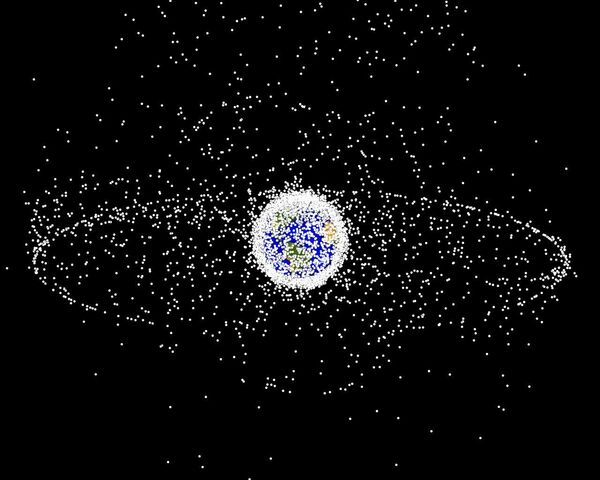MOSCOW, August 22 (RIA Novosti) - The Russian Federal Space Agency (Roscosmos) is planning to spend 10.8 million rubles to develop a new spacecraft that would be used to remove space debris which is locked in a geostationary orbit, such as decommissioned satellites and used-up boosters, according to Izvestia.
The agency intends to deploy the spacecraft, codename Liquidator, to clear up the geostationary orbit over the equator, which is 36 thousand kilometers above sea level. Satellites in this area, which is sometimes called the Clarke orbit or Clarke belt, appear stationary because they are locked in place relative to the Earth. As a result of this feature, the geostationary orbit is where communication and broadcasting satellites mostly operate.
The Liquidator’s parameters are listed in the Federal Space Program project for 2016-2025: the spacecraft will weigh four tons and be capable of removing up to 10 decommissioned craft and boosters from orbit per 6-month cycle. The space vehicle is expected to have an operating life of up to 10 years and it will be capable of performing at least 20 clean-up cycles.
“The geostationary orbit is already pretty crowded. The task of creating such a spacecraft is extremely difficult and we haven’t chosen a contractor yet. I believe that we’ll review proposals that have been presented by several companies which have experience in creating and operating spacecraft in a geostationary orbit. I’m talking about S.P. Korolev Rocket and Space Corporation Energia, Khrunichev State Research and Production Space Center, NPO Lavochkin, and Information Satellite Systems - Reshetnev Company. I believe that the companies that have more experience with orbital approaches and docking will have the advantage, as this technology will be particularly valuable to the project,” Alexander Danilyuk, Assistant General Manager of TsNIIMash (the principal scientific agency of Roscosmos) told Izvestia.
According to Danilyuk, there are two ways the Liquidator could dispose of space debris: it could either direct the debris to a higher orbit where it won’t affect other craft, or it could shift the debris out of orbit, so that it can sink towards the so-called Spacecraft Cemetery in the southern Pacific Ocean. He also added that taking the debris to a higher orbit is easier and more expedient than de-orbiting.




